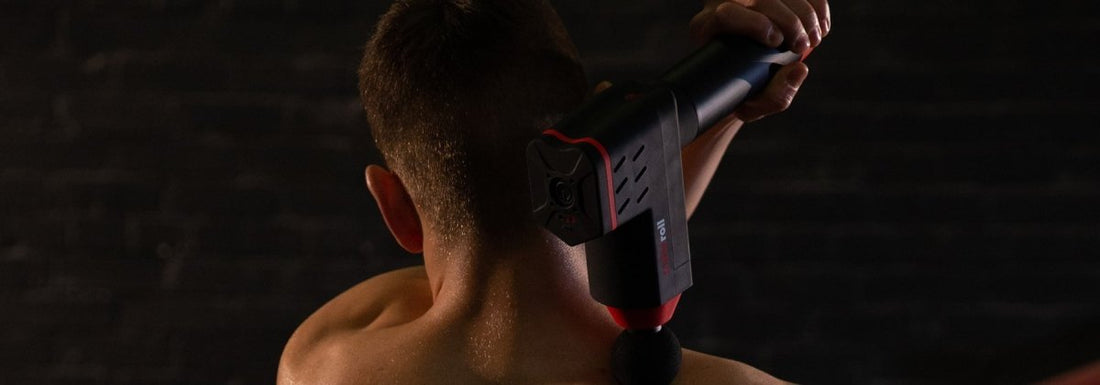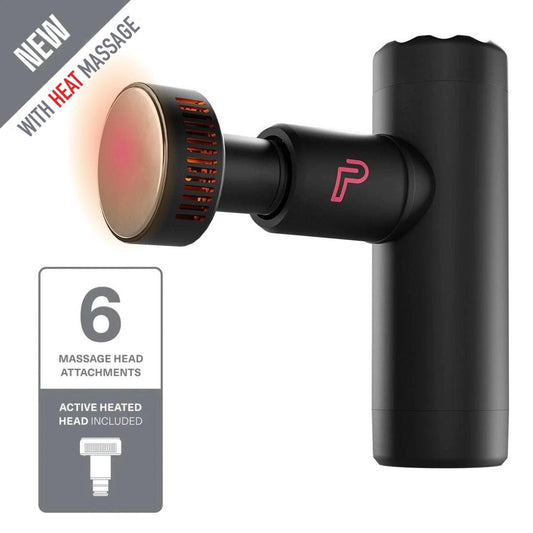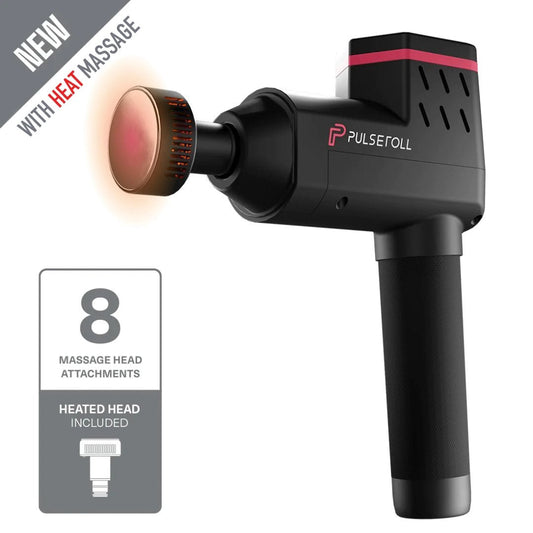Introduction
The neck is commonly recognized as one of the points of the body most prone to stiffness and pain. In fact, being such a pivotal point for all kinds of movements, the neck is bound to accumulate tension throughout the day, and all sorts of things will conspire to leave you with a sore neck, from bad sleeping posture, to too many hours sitting at your desk and looking at the computer, to injuries and strains during exercise. The neck is, for these reasons, one of the most frequent targets of massage therapy.
Pulseroll’s Massage Gun is an innovative and powerful tool that is revolutionizing the field of massage therapy, and that allows you to enjoy the benefits of a deep tissue massage anytime and everywhere you want, in a relatively inexpensive way.
In this article, we will talk about the most important general benefits associated with the use of Pulseroll’s Massage Gun, and more specifically about what it can do for your neck, along with some recommendations about the best techniques, teaching you how to use a massage gun for neck pain or for a stiff neck.
In this article, we'll cover:
- What massage gun therapy can offer you
- The neck
- Can you use a massage gun on the neck?
- How to use a massage gun on the neck

What massage gun therapy can offer you
Pulseroll’s Massage Gun uses a simple mechanism to maximum effect, relying on an oscillating backward and forward movement to reach deep into the tissues. Its efficacy is supported by professional therapists, athletes, and other professionals of all kinds.
The kind of benefits it offers parallels those of a professional deep tissue massage. Here are the most important ones:
- Pain and stiffness relief
The positive effects of massages on stiff muscles and sore areas of the body are supported by experts and by the scientific literature (1). Massages also, more generally, help the muscles to relax, relieving tension and stress.
- It helps to increase local tissue metabolism and to stimulate blood and lymph circulation (2).
The result of this is to increase the amount of oxygen and nutrients that reach the tissues, and it may help to clear out toxins.
- It is a therapeutic tool for injury rehabilitation (3).
This is, naturally, one of the reasons why massages are so important for athletes.
- It may improve muscle function and flexibility (4).
By helping to make joints more comfortable with their full range of motion, this is also indirectly relevant to injury prevention.
- It can help to break down scar tissue (5).
Massages are used by health practitioners to treat scars, for example after surgeries. You can find more information about this here.

The neck
The neck involves a complex group of muscles, two of the most important being the sternocleidomastoid and the upper trapezius, and is a crucial point of the body for posture and movement.
The most common use for a massage gun on the neck is to relieve pain and tightness, and to relax the muscles. Studies have shown positive results in the therapeutic use of massages on the neck (6, 7). The neck is also prone to developing trigger points, which massages help to alleviate.
A very important additional benefit of the massage gun when it comes to the neck is relief of headaches (8, 9) While the scientific research on this topic is not extensive, this is a commonly observed effect, and may have to do, at least in part, with the increase in blood flow to the brain.
Can you use a massage gun on the neck?
The neck is a highly delicate part of the body, so extra care is necessary. Never use the massage gun on the front of the neck and don’t apply too much pressure on the sides, either. You can apply more pressure on the back of the neck, which is comparatively less vulnerable, but not directly on your spine.
How to use a massage gun on the neck
As the neck is such a sensitive area, the best is to use one of the larger heads. Start with the lowest speed setting, gradually increasing if you so desire, and, again, do not apply too much pressure.
You should massage the side opposite to that of the hand that is holding the massage gun. If you use the massage gun on the same side of the hand that is holding it, you will inevitably tense up the same muscles that you are trying to massage, which is counterproductive.
Extend the neck to the opposite side, so that you offer a larger area for the massage gun to work on. Move the gun slowly and lightly up and down the side of the neck, and around, to the back. You may also move your neck and the arm on the side that is being massaged, to experiment with different positions and kinds of stimuli.
Stay away from the frontal part of your neck. Using a massage gun on your throat would not be pleasant, beneficial, or safe. You also should not use it directly on your spine, at the back, but only around it.
Conclusion
The neck is crucial to the way our bodies move, to our posture, and to our balance. For that reason, it is also very vulnerable to tension, stiffness, and pain. Massage therapy is a valuable technique in helping to treat such problems and in helping you relax and de-stress after a long day.
In this article, we focused on how to use a percussive massage gun on the neck and on the benefits you can derive from it. If you feel that your neck would appreciate some extra attention, don’t forget to try this fantastic tool for yourself!
One important final note: it’s very natural, and indeed recommended, that you would want to massage your shoulders along with your neck. While we have focused solely on the neck in this article, you can find information on the use of the massage gun on the shoulders here.
References:
2 – https://www.betterhealth.vic.gov.au/health/conditionsandtreatments/massage
3 – Standley, Robert; Miller, Michael; Binkley, Helen. Massage's Effect on Injury, Recovery, and Performance: A Review of Techniques and Treatment Parameters. Strength and Conditioning Journal. April 2010, Volume 32, Issue 2, pp.64-67.
4 – Kaur, K.; Sinha, A. G. K. Effectiveness of massage on flexibility of hamstring muscle and agility of female players: An experimental randomized controlled trial. Journal of Bodywork and Movement Therapies. 2020 Oct, 24(4):519-526.
5 - Deflorin, C.; Hohenauer, E.; Stoop, R.; van Daele, U.; Clijsen, R.; Taeymans, J. Physical Management of Scar Tissue: A Systematic Review and Meta-Analysis. Journal of Alternative and Complementary Medicine. October 2020, 26(10): 854–865.
6 – Sherman, Karen J.; Cherkin, Daniel C.; Hawkes, Rene J.; Miglioretti, Diana L.; Deyo, Richard A. Randomized trial of therapeutic massage for chronic neck pain. The Clinical Journal of Pain. March-April 2009, 25(3):233-8.
7 – Sherman, Karen J.; Cook, Andrea J.; Wellman, Robert D.; Hawkes, Rene J.; Kahn, Janet R.; Deyo, Richard A.; Cherkin, Daniel C. Five-Week Outcomes From a Dosing Trial of Therapeutic Massage for Chronic Neck Pain. Annals of Family Medicine. March 2014, 12 (2): 112-120.
8 – Quinn, Christopher; Chandler, Clint; Moraska, Albert. Massage Therapy and Frequency of Chronic Tension Headaches. American Journal of Public Health. October 2002, 92(10): 1657–1661.
9 – Chaibi, Aleksander; Tuchin, Peter J.; Russell, Michael Bjørn. Manual therapies for migraine: a systematic review. Journal of Headache and Pain. Apr 2011, 12(2): 127–133


